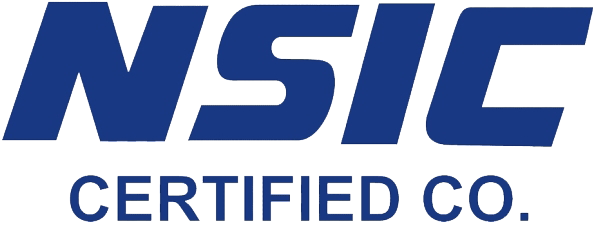Wow — payment reversals are the kind of headache that shows up when you least expect it, and they can wipe out a weekend’s worth of spins if you’re not careful, so knowing what to do matters immediately; in the paragraph that follows I’ll explain what a payment reversal is and why it happens.
A payment reversal is when a deposit or withdrawal is undone by a payment provider, issuer, or the casino itself after the action was processed, and this often happens for reasons like chargebacks, suspected fraud, KYC failures, or payment provider rules that flag the transaction; understanding the causation helps you prevent and resolve reversals. This raises the practical question of prevention, which I’ll tackle next.

Preventing reversals starts with three simple rules: (1) complete KYC before you deposit, (2) only use payment methods supported in your province, and (3) match deposit and withdrawal methods where possible — these steps reduce flags and delays significantly, and I’ll show how to follow them in your first session. Next, I’ll outline common reversal triggers you should watch for.
Common triggers include mismatched names or addresses, rapid deposit/withdrawal cycles, card issuer disputes, and third‑party payments; a quick example: using someone else’s prepaid card or a family member’s card can trigger automatic reversals or freezes, which then lead to longer holds while the casino investigates, and that leads into what to do if a reversal happens.
Step‑by‑Step: What to Do If a Payment Reversal Happens
Hold on — if you see a reversal notification, pause before you escalate and gather evidence: screenshots of the transaction, bank statements, the transaction ID, and any email/chat logs with the casino; this evidence is what speeds up investigations and often short‑circuits long delays, and the next paragraph shows how to use that evidence.
Contact support immediately with the evidence, ask for the exact reason for the reversal, request a written timeline for resolution, and confirm whether your account is under temporary restriction; if the issue is KYC related, provide documents promptly — passport/driver’s license and a recent utility/bank statement usually suffice — because rapid documentation is the most efficient route to lifting holds. From here, escalation options depend on the cause, which I’ll explain next.
If the reversal stems from a chargeback or bank dispute, you’ll often need to communicate with your bank to confirm you didn’t authorize a chargeback and, if needed, withdraw the claim; failing that, the casino might be forced to treat funds as disputed and refuse payout, so understanding timelines and bank policies is crucial, and I’ll compare typical timelines shortly.
Timelines and Likely Outcomes — What to Expect
My gut says most reversals wrap up within 3–14 days when players cooperate, but in some bank disputes or fraud investigations it can stretch to 30–90 days; knowing this helps set expectations so you don’t chase support dozens of times, and next I’ll give a compact checklist you can use immediately.
Quick Checklist: collect screenshots, transaction IDs, KYC docs, support chat transcripts; send everything in one secure email or upload to the support portal; ask for a case number and an expected resolution window — these small steps reduce back‑and‑forth that causes delays. This checklist leads naturally into specific mistakes people make that lengthen the process.
Common Mistakes and How to Avoid Them
Here’s what bugs me: players waiting to verify accounts until the withdrawal stage — that’s the fastest route to a reversal hold; instead, verify at sign‑up so you’re not blocked later, and that preventive step is the first item in our “how to avoid” list which follows.
- Not verifying account before play — verify immediately to avoid holds; this reduces risk of reversals and is the logical first precaution before depositing.
- Using third‑party or family cards — always use a card/banking instrument in your name to avoid disputes and provider flags, which I will explain further below.
- Ignoring casino payment rules — read the payments page for limits, permitted methods, and withdrawal policies because mismatch is a common reversal cause and it ties into how to structure withdrawals smartly.
To avoid the above, always use Interac or e‑wallets that match your verified account details and keep deposits modest relative to your bank limits — this operational advice flows into examples that show how small differences matter.
Mini‑Cases: Two Short Examples
Case 1 — The rushed KYC: A player deposited $600 CAD with Visa and waited two weeks before attempting a $1,200 withdrawal after a lucky streak; the casino flagged the withdrawal because KYC was incomplete and the issuer opened a dispute for the large sum — after sending passport + utility bill the hold was lifted in five days, which underlines the “verify early” rule I just recommended. This case leads us to see how payment choice affects outcomes.
Case 2 — The third‑party payment: Another player used a prepaid card bought for them by a friend to deposit $100 CAD; the card issuer flagged the transaction as not matching the cardholder and reversed the deposit, and because the casino treated the account as suspicious, the player faced a 10‑day freeze while documentation arrived — this shows why third‑party payments are risky and why method choice matters next.
High‑RTP Slots: How to Spot and Use Them Without Chasing Guarantees
Hold on — RTP (return to player) tells you expected return over a very large sample, not a promise for one session; a 97% RTP means roughly $97 back per $100 wagered in the long run, but short sessions can vary wildly, and next I’ll explain how to pick slots practically.
Look for transparent RTP reporting (site or game info tab), published iTech Labs/GLI certification, and volatility indicators; high RTP slots (95%–98%+) are generally better for wagering requirements and sustained bankroll health, and the next paragraph gives a compact comparison table to help choose between options.
| Option | Typical RTP | Best Use | Notes |
|---|---|---|---|
| Low Vol, High RTP | 96%–98% | Clearing bonuses, long sessions | Smaller wins but steadier variance |
| High Vol, High RTP | 95%–97% | Targeted big hit attempts | Longer droughts but large payouts possible |
| Progressives | Varied (effective RTP may be lower) | Jackpot hunting | Consider contribution rate and entry cost |
When clearing bonuses with wagering requirements, prefer low‑vol, high‑RTP slots because they lower variance while you satisfy playthrough; this risk‑management approach connects directly to banking choices and payout patience, which I’ll describe next.
Where to Play and a Practical Recommendation
If you’re looking for a Canadian‑facing site with Ontario regulation and clear payment pages, check the casino’s payments and fairness sections before depositing — for example, the official site lists supported Canadian payment methods and audit certificates up front which is exactly the transparency you want to see before trusting a balance with a platform, and this leads into how to match methods.
Match deposit and withdrawal routes (e.g., Interac in → Interac out) where possible, keep withdrawals within posted daily/weekly caps, and contact support early if you need a higher limit — many disputes arise because players ignore posted caps; next I’ll give a short tool comparison to make the choice easier.
| Tool/Method | Speed (Withdraw) | Fees | Best for |
|---|---|---|---|
| Interac | 1–3 business days | Usually none | Most Canadian bank users |
| E‑wallets | Same day–24 hours | Possible fees | Fast cashouts, mid/high amounts |
| Cards (Visa/Mastercard) | 3–7 days | Possible processing fees | Convenience |
One more practical pointer: if you want a platform that shows audit certificates and payment rules clearly, it’s worth starting with a smaller deposit to test verification and withdrawal flows, and if all goes well you can scale up; this practice brings us to the mini‑FAQ that follows.
Mini‑FAQ
Q: How long before I should expect a reversal to be resolved?
A: Typically 3–14 days with prompt cooperation; bank disputes or fraud investigations can take longer. Keep your evidence handy and ask support for a case number to speed things along and to track progress.
Q: Can I avoid a reversal by using crypto?
A: Crypto can avoid some card‑related reversals but it has its own verification and provincial legality checklist; for many Canadian players, Interac and e‑wallets are safer and supported options, which I explain earlier in the payments section.
Q: Which slots are best for clearing wagering requirements?
A: Low‑volatility slots with RTP ≥96% are typically best because they reduce variance while meeting playthrough; always confirm game weighting in the bonus terms before relying on a single strategy.
Quick Checklist Before You Deposit
- Verify your account (ID + proof of address) — do this before you deposit to avoid holds.
- Read the payments page and note min/max and withdrawal cadence for your method.
- Deposit a test amount, request a small withdrawal to confirm route and timelines.
- Prefer Interac or verified e‑wallets; avoid third‑party payments.
Following this checklist reduces reversal risk and ensures you know what to expect next in terms of payout speed and support availability.
18+ only. Gambling involves risk; never bet money you cannot afford to lose. If you feel you need help, contact your local resources such as ConnexOntario (1‑866‑531‑2600) or provincial helplines; for information and payments transparency check casino payments and fairness pages and consider platforms that publish audit certificates such as the official site before depositing.
Sources
Typical industry practice, payment provider timelines, and standard KYC requirements as reported by Canadian payment processors and iGaming auditors; always confirm with the casino’s payment pages and fairness certificates.
About the Author
Local Canadian reviewer with hands‑on experience testing payments, KYC flows, and game volatility across multiple Ontario‑facing platforms; I write practical guides aimed at reducing friction for novice players and improving payout outcomes, and the next piece I write will dig deeper into bonus math and optimal bet sizing.










